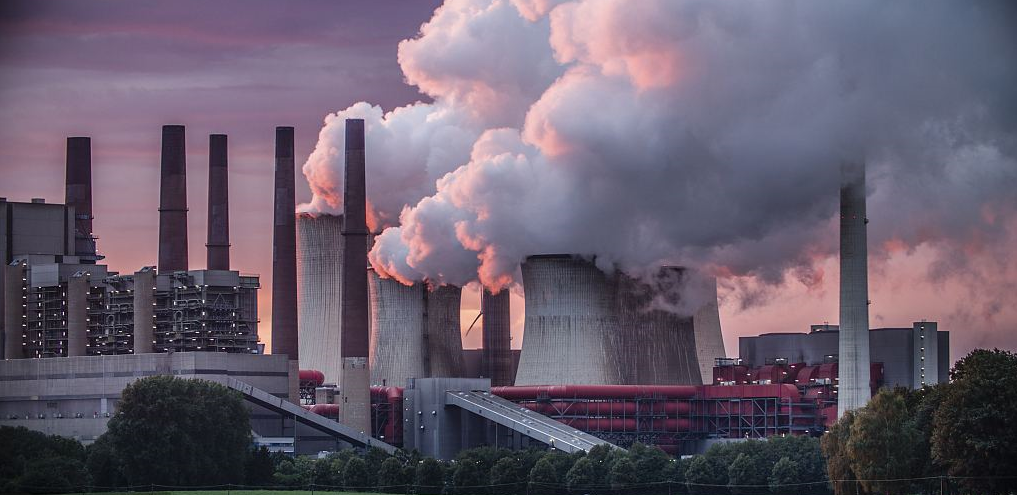Power Sector in the Chinese Carbon Market: A Promising ‘One Eighth’?
admin 2017/12/26
On the Dec 19
th 2017, China officially launched the national carbon market. As expected, the power sector is the only industry included. It is too late to discuss whether more sectors should have been covered in China’s emissions trading scheme (ETS). However, discussions on the power sector and the national carbon market must continue.
On December 6
th, SinoCarbon, German Corporation for International Cooperation (GIZ) and International Carbon Action Partnership (ICAP) held an international workshop on emissions trading and power industry regulations in Hangzhou. EU specialists attending the event discussed policy design, emphasizing the guidelines that the power sector in China’s carbon market should adhere to. Experts further stated that the Chinese national carbon market should pay attention to lessons learned from the EU emissions trading system (EU ETS), such as free allowances, benchmark calculations, etc. These issues may be particularly critical if China’s current power market stays in low degree of liberalization.
This article discusses the following questions to outline the opportunities and challenges presented by the integration of China’s power industry into the national carbon market. It will address questions one to four, with a subsequent article to follow.
- Why start with the power industry?
- What is the basis for the power industry to allocate allowances?
- What are the potential issues arising from free allocation in the power industry?
- The power industry emits the largest share of carbon emissions. Will this translate into the largest share of reductions?
- What is the effect of the power industry reforms on the national carbon market?
- How will the current low marketizations of China’s power industry pass the costs to downstream?
- How will the other power sector reform policies affect the carbon market?
Why start with the power industry?
Although the power sector is only one eighth of the carbon market, it is responsible for the largest share of emissions compared to the other seven sectors. Current statistics demonstrate that the China’s power sector emits between 3.0 and 3.5 billion tons of carbon dioxide per year, meaning that the power sector is the source of nearly one third of all energy-related carbon emissions in China.
[1] To elaborate, the total carbon emissions of the eight sectors included in the national carbon market equals 4.5 to 5.0 billion. Thus, it is evident that the power industry emits the overwhelming bulk of CO
2.
Aside from large-scale emissions, the power industry has other characteristics that have led carbon market officials to select this industry as its pilot. From a technological perspective, the power industry is highly focused, produces a single product, and has a decent foundation in data. Measurement Reporting Verification (MRV) is also relatively simple to implement, with a comparatively low administrative cost. Due to these traits, the power industry has a basis on which to employ the benchmarking method for allowances allocation, which has met resistance in other industries. Moreover, first incorporating the power industry takes into account state-owned businesses, as China’s national power sector does not participate in international competition. Yet, its tendency to favor historic methods (grandfathering) of emissions calculations risks over allocations. However, this problem is not unique to the power sector.
Considering the above, it is reasonable that the power sector serves as the China’s national carbon market pilot industry. The massive amounts of emissions from the power sector promises that China will remain the largest carbon market in the world, with a size over 1.5 times of the EU ETS. Further, after learning first from the power sector, other industries can gradually be incorporated.
What is the basis for the power industry to allocate allowances?
In May 2017 the “The Allowance Allocation Plan for the National Carbon Market (Discussion Paper)” detailed allowance calculations for three industries: power, electrolytic aluminum, and cement. Aside from the current method of allowance calculations, the discussion paper also included expert and enterprise opinions.
[2]

The allowance allocation for power generation enterprises is determined by the national industry benchmark set by China’s National Development and Reform Commission (NDRC). Within these allocations there is room for adjustment, taking into account factors such as national emissions reduction targets, shortfalls in industry allowances, and beta testing. There is a variance in allowance allocations in the power industry, due to the difference of emissions among electricity generators. There are 9 allowance allocations benchmarks for coal-powered units and two benchmarks for gas-powered units. As for the heating sector, the coal and gas units each has one benchmark value.
Table 1: Power industry allowance allocation Benchmarks

What are the potential issues arising from free allocations of allowances in the power industry?
The initial free allocation of allowance is an issue that cannot be easily circumnavigated. The EU’s distribution of free allowances led to ‘windfall’ profits, but also an over allocation of allowances. Will China’s national carbon market face the same issue? As explained by EU authorities, the distribution of free allowances can causes distortions to the market. In order to avoid this problem, allowance allocations should be distributed through an auction market, with gradual increases the proportions for auctioning.
To exemplify, within the above process of free allowance distribution, controlling enterprise do not pay due cost, which essentially allows them to consider the allowances they receive as free of charge. This severely undermines motive and imitative to mitigate the problem. At the same time, free distribution sets a bad precedent for future investments in power sector. It encourages investments in ‘dirty energy’ or high-carbon electricity, rather than ‘green’ or renewable energy. In the case of China’s low energy market, this presents a further problem. Chinese enterprises cannot send increased carbon costs downstream, giving them bargaining leverage over carbon market authorities.
The power industry emits the largest share of carbon emissions. Will this translate into the largest share of reductions?
There are three predominant methods to reduce carbon emissions from coal-powered generators: replacing coal with lower-carbon fuels, such as natural gas, improving energy efficiency, and implementing carbon capture and storage (CCS).
[3] Due to the effectiveness of energy-saving and emission reduction policies introduced as part of China’s series of Five Year Plan and the progress of thermal power in China, coal-powered power plants in China are advancing on the international standard in terms of power production and energy consumption. China’s carbon emission reductions will be limited from improvement of energy efficiency, due to the fact that energy-saving measures have already been enacted in China over the past several years.
Arguably, the emission reduction of the power industry after its inclusion in the carbon market will depend on future carbon prices and the development of breakthrough technologies. Arguably, CCS developments will take time to become commercialized. However, fuel substitution may be a promising option, such as reducing coal output and increasing the output of natural gas or even biomass power.
Conclusion
Among the industries included in China’s national carbon trading pilot projects the power sector has been positioned as the regulating authority. Within the pilot industries in the national carbon market, the power sector has also been placed in the upmost importance: the original eight industries have been indentured to the power industry. This one eighth holds the largest share of emissions and an obvious advantage of carbon accounting. However, the national carbon market still remains in a beta stage. The NDRC’s cautious attitude is a wise move, not only to show the climate change commitment, but also to cover the largest emitting industry. China's power industry is currently facing a critical phase of marketization and reform. The next portion of this article analyzes several issues related to the carbon market and power industry reform.
End Note:
[1] Emissions Trade in China: Power Industry Carbon Emissions Simulation. Link: https://www.iea.org/media/translations/chinese/cbeex.pdf
[2] The initial scale of the national carbon market exceeded 5.0 billion tons Link: http://www.ideacarbon.org/archives/39385
[3] Reducing Emissions from Coal Plants. Link: http://www.canadiancleanpowercoalition.com/files/2912/7299/7032/3%20Ways%20to%20Reduce%20Emissions%20from%20Coal%20Plants%20-%20Factsheet.pdf
Author: Lin Jiaqiao
Translation: Kendall Tyson

 The allowance allocation for power generation enterprises is determined by the national industry benchmark set by China’s National Development and Reform Commission (NDRC). Within these allocations there is room for adjustment, taking into account factors such as national emissions reduction targets, shortfalls in industry allowances, and beta testing. There is a variance in allowance allocations in the power industry, due to the difference of emissions among electricity generators. There are 9 allowance allocations benchmarks for coal-powered units and two benchmarks for gas-powered units. As for the heating sector, the coal and gas units each has one benchmark value.
The allowance allocation for power generation enterprises is determined by the national industry benchmark set by China’s National Development and Reform Commission (NDRC). Within these allocations there is room for adjustment, taking into account factors such as national emissions reduction targets, shortfalls in industry allowances, and beta testing. There is a variance in allowance allocations in the power industry, due to the difference of emissions among electricity generators. There are 9 allowance allocations benchmarks for coal-powered units and two benchmarks for gas-powered units. As for the heating sector, the coal and gas units each has one benchmark value.






